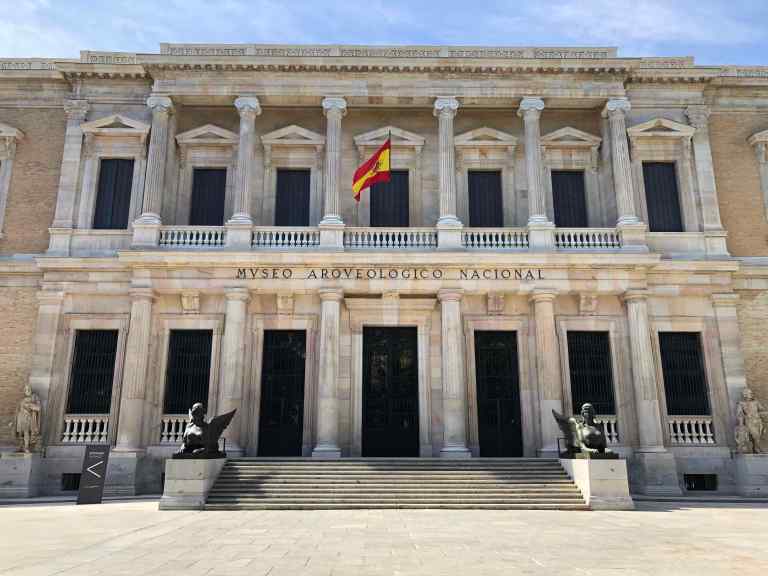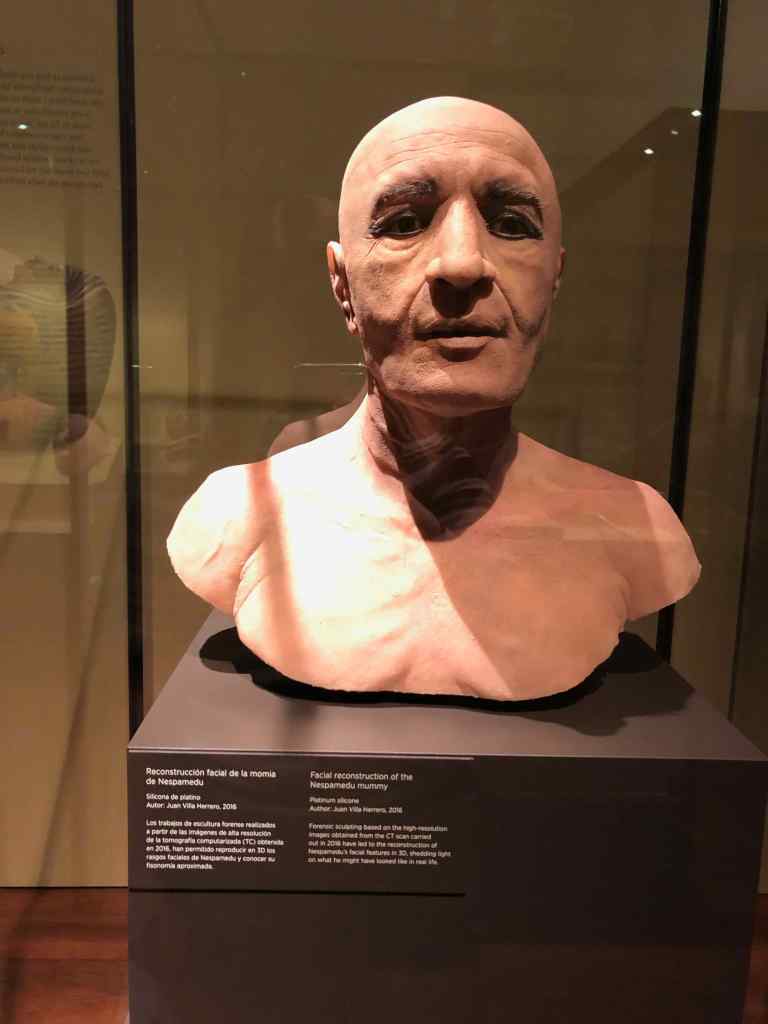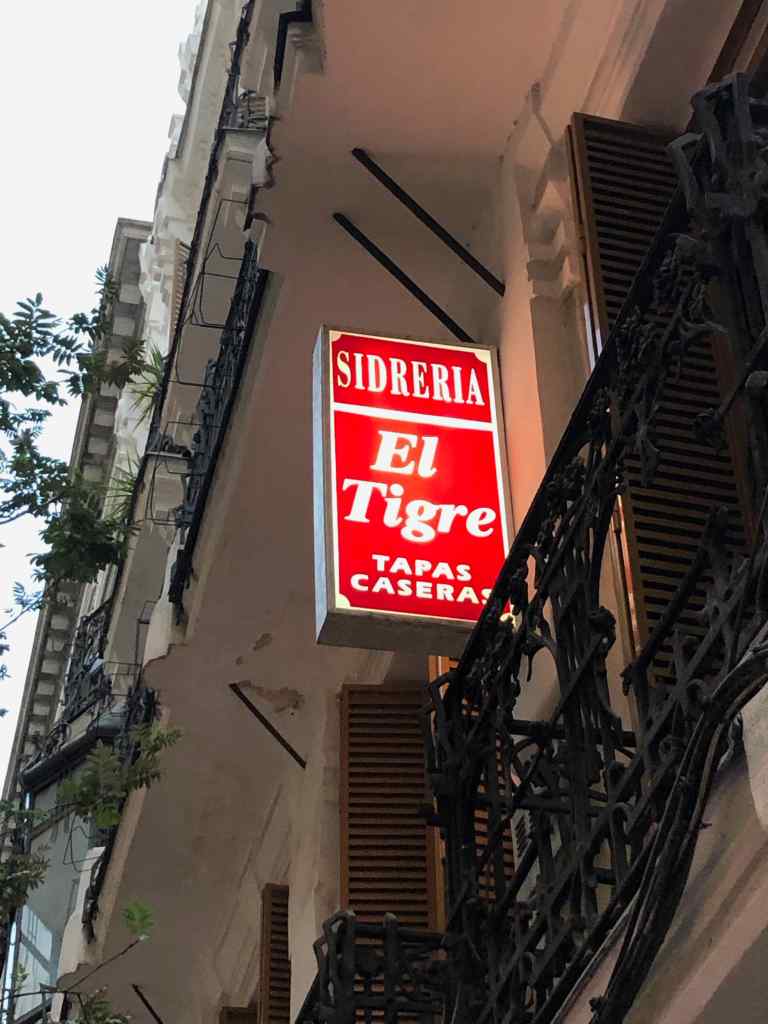Today, I woke up bright and early to head down to Madrid. As I arrived, I was amazed at how beautiful the city was – compared to Barcelona’s winding streets and many gritty alleyways, Madrid is absolutely beautiful. Again, apologies for the low quality iPhone photos, as my Nikon remains sadly damaged in its case.




First thing, I dropped my things off at the Hotel Santo Mauro, which I sprung for after my week of Airbnbs (and by sprung for, I mean, cashed in points). It was definitely the right decision, from being a beautiful historic site in and of itself (a previous estate home) to simply being a comfortable end to the trip.
After settling into the hotel, I headed for lunch – Madrid is known for it’s “Menu del dia” which is essentially a prix fixe lunch menu. I went to a restaurant teeming with business people, which ended up having great food to support its popularity. I had burrata, seafood pasta, tiramisu, a glass of wine and a bottle of water for 17 Euro.
It turns out that my Spanish, although rusty when I first arrived, has gotten good enough to be convincing – however, it turns out that a couple keys words I ‘remembered’ in Barcelona were actually Catalan variants, as my waitress pointed out. Later in the meal, the folks at the table next to me realized that I was American after I stumbled a couple times speaking to the waitress in Spanish and we got talking – of course, they all had connections to NYC, including a kid currently at NYU.



After lunch, I headed to the Museo Archeologico, which has quite an incredible collection of artifacts, from prehistoric to modern day. I was quite pleased to find many creative and unique exhibits, as well as incredible curation / stating – especially for the 3 Euro entry. Getting there was a bit of a struggle – the museum is located in the National Library, but the entrance is on the opposite side of where I would expect from a map.

The exhibits were great – including many things I hadn’t seen before, as is a theme with Spanish archeology / anthropology museums. My favorites included the Al-Andalus exhibit (the period during which Muslim rulers led Spain from Granada) as well as the modern and near-modern exhibits. They also had a fascinating exhibit on money and what has constituted money over the years. Of course, my degree in medieval history also pushed me to explore the beautiful exhibit on medieval Spain – some amazing artifacts! Many photos below with captions – these are more so things I found interesting and unique to the museum, rather than their ‘highlighted’ pieces of true historic acclaim – and, of course, museum lighting and iPhone photos aren’t doing this any favors (apologies for poor lighting).
Money exhibit:



Medieval Spain / Europe:




Al-Andalus (Muslim empire in Spain):




Roman / Greek / pre-medieval history (this is an incredible reductive sub-set of the items they had across multiple floors / rooms of the museum, from busts to coins to art, pottery, weapons, etc. – these were things I hadn’t seen before):



Pre-modern / modern period:


- Spanish litter – decorated with hand painted art. They took this style from France and adopted it here.

- An amazing chest decorated with ecclesiastical motifs.
Egyptian art (apparently when Egypt wanted to create a canal in the 1950s, they asked European countries to come in and excavate before they flooded architectural sites in Egyptian / Sudanese Nubia. Spain stepped up to the plate and was able to save over 3,000 artifacts, many of which are in this museum and represent nearly all periods of Egyptian pre-modern history):




After an afternoon at the museum, I headed back to the hotel to relax for just a little bit. Then, I went on my second food tour of the trip: Devour’s Wine and Tapas Tour in Madrid! I have to say, the second tour was even better than the first in Barcelona – and I would 100% recommend to anyone looking for a local food tour.
We met our guide, Oliver, in the Malasana area of Madrid, and enjoyed an amazing 3 hours of food and drink. We started at a bar in Malasana, where we had vermouth, patatas brava, and a traditional fried eggplant with a gazpacho-type sauce.



The bar is restored from a zinc bar hidden during wars during the 1930s and recently reestablished; the eggplant is fried in a special tempura batter to be especially light. The patatas bravas, which is a similar dish to what I enjoyed in Barcelona, is done differently here – the authentic Castilian way is slow cooked onion, garlic and paprika, with pork broth. In Catalonia (where Barcelona is), they often add a bit of aioli, which makes them a bit creamier. Both versions are equally delicious – and it’s neat to see the differences in regional Spanish cuisine. Then, we wandered towards our next stop through Madrid.
Our next stop was equally fun – we went to a wine bar, where the proprietor had grown up in a vineyard, hit it big on a Spanish dating reality TV show, and now has opened his own bar with his winning $ (no mention of his date on the show…). Of course, we paired the white wines with amazing cheeses, including manchego, a black garlic sheep’s milk cheese, a Pyrenees cheese, and a goat’s milk cheese (my favorite).




Our final, and most incredible, stop was at a farm-to-table restaurant called Angelita, which had eclectic decor and very friendly staff (not to mention delicious foods and drink!). On the way, we passed between two districts which used to be separate ‘cities’ back in the day – in the 1700s, these areas would have had a church at the corner, to help travelers pray for safe passage to wherever they were going next. One of these still exists today for travelers switching neighborhoods – right next to the Adidas store!

We also saw signs for authentic tapas bars – below is an example of a ‘sidreria’ which is a bar specializing in sidre, which is a Spanish sparkling wine.

Introductory photo of Angelita’s decor – they specialize in tomato-based foods during the summer months when they are in season.





After all that food and wine, there was nothing more to do but retire to the hotel – after getting multiple recommendations for food to try on my last day in Madrid, of course! I have to say, I think I underestimated Madrid – tomorrow is a packed itinerary, and I know I’ll leave having found so much more to do.







